Silica sand mine in Jáltipan. Photo: Aldo Santiago
As part of the project Tracing Green Capital in Mesoamerica, Avispa Midia documented the vast deployment of machinery in the Isthmus of Veracruz in the south of the state. The highways from San Juan Evangelista to Coatzacoalcos are flooded with workers, semi-trucks, and materials. The nearshoring boom—the relocation of productive chains to geographies closer to the market—is driving the consolidation of strategic projects for the reorganization of southeastern Mexico.
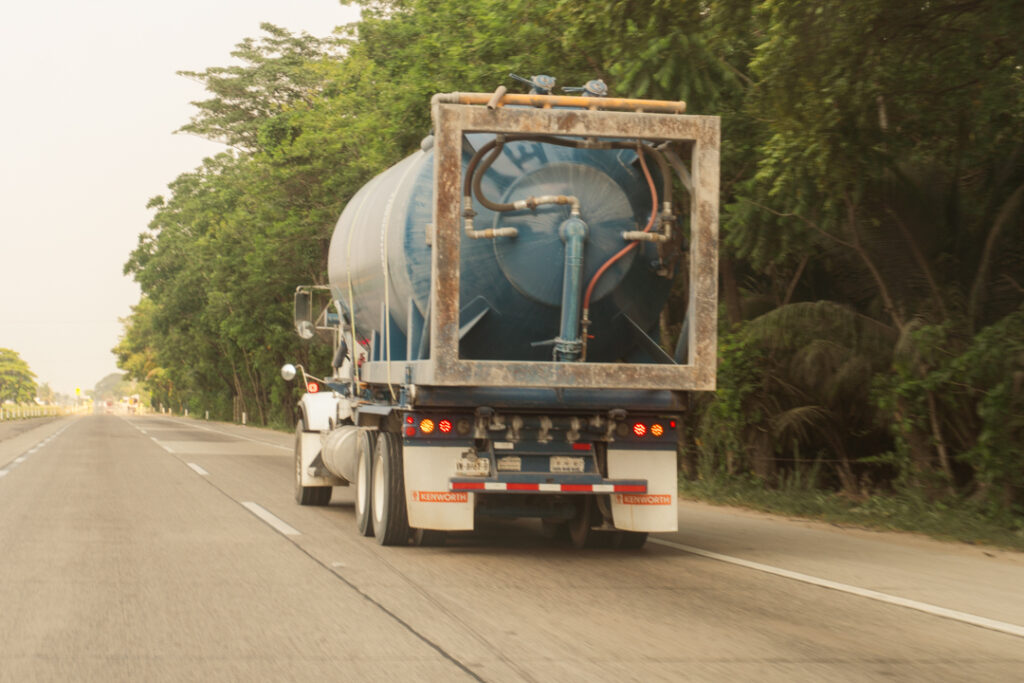
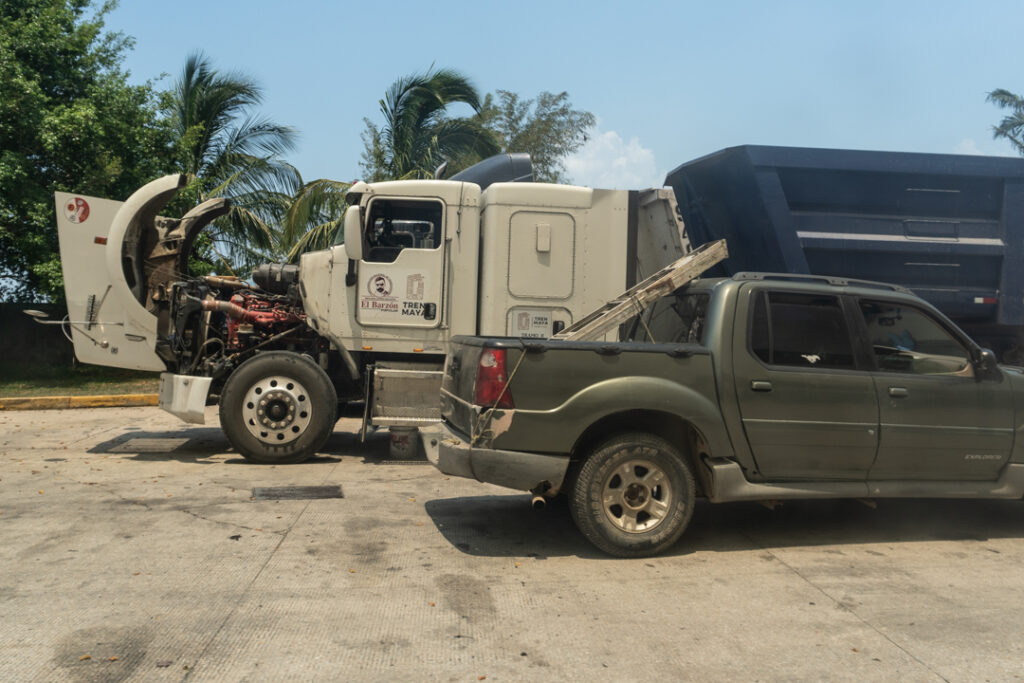
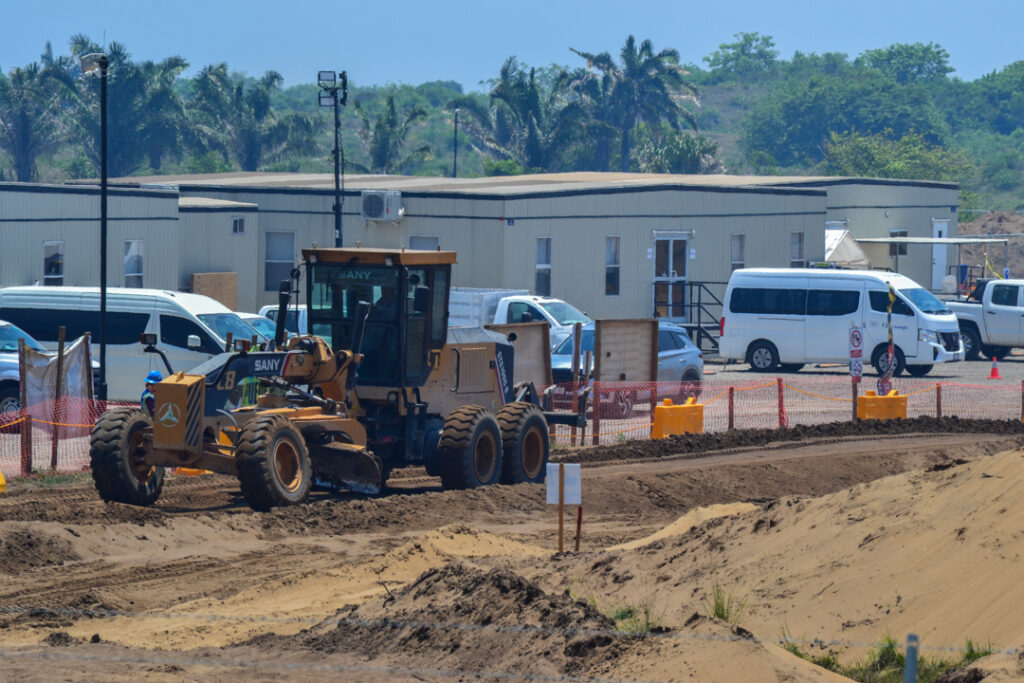
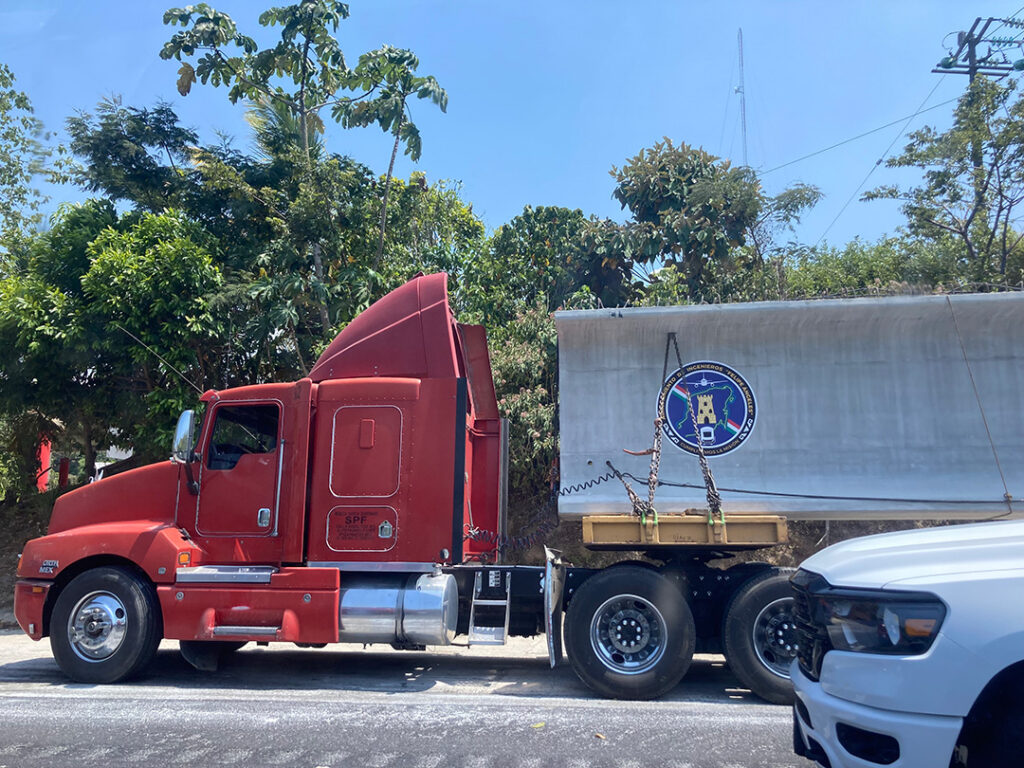
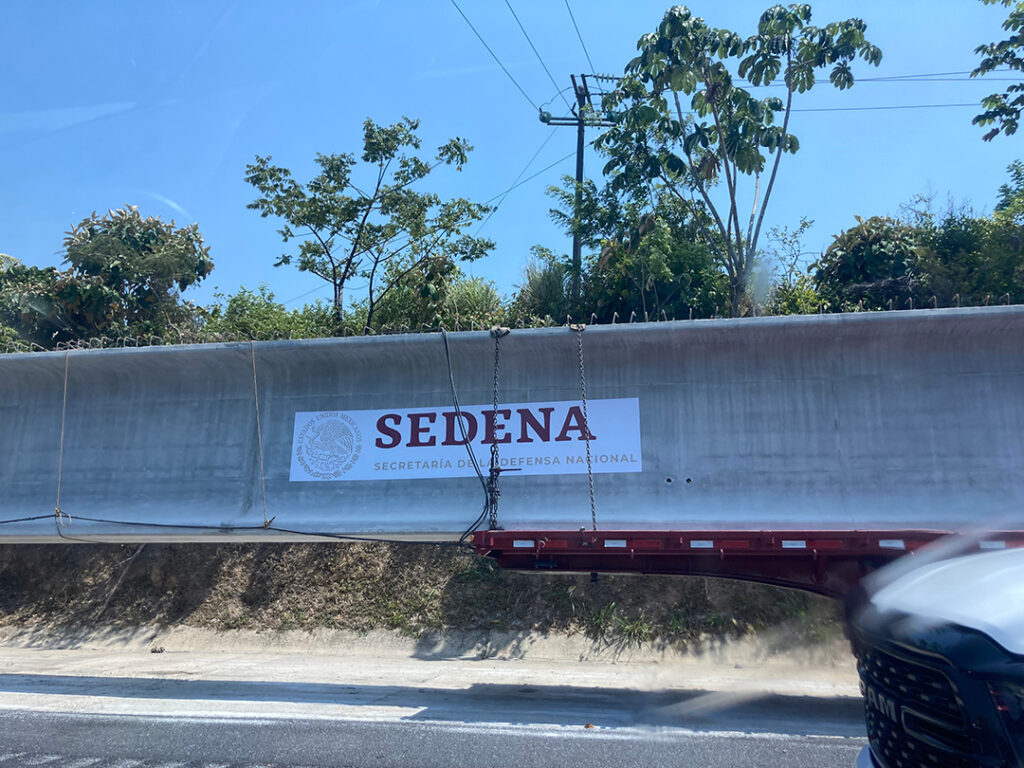
The zone is key for the articulation of 10 industrial parks being planned for the Interoceanic Corridor project which also passes through Oaxaca. There are five industrial parks, or Development Poles of Well-being (PODEBI) as they are being called officially, planned each for Oaxaca and Veracruz.
Map made by GeoComunes
Furthermore, southern Veracruz is a nodal point for the interconnection of the Maya Train, the Dos Bocas refinery, and a series of infrastructure projects including highways, ports, and airports showing the commitment to consolidate the foundation for the exportation of commodities toward markets in the United States, Europe, and Asia.
These initiatives form part of the articulation of megaprojects in the region meant to accelerate the extraction of hydrocarbons including unconventional ones that are more harmful to the environment like open-pit mining and agroindustry.
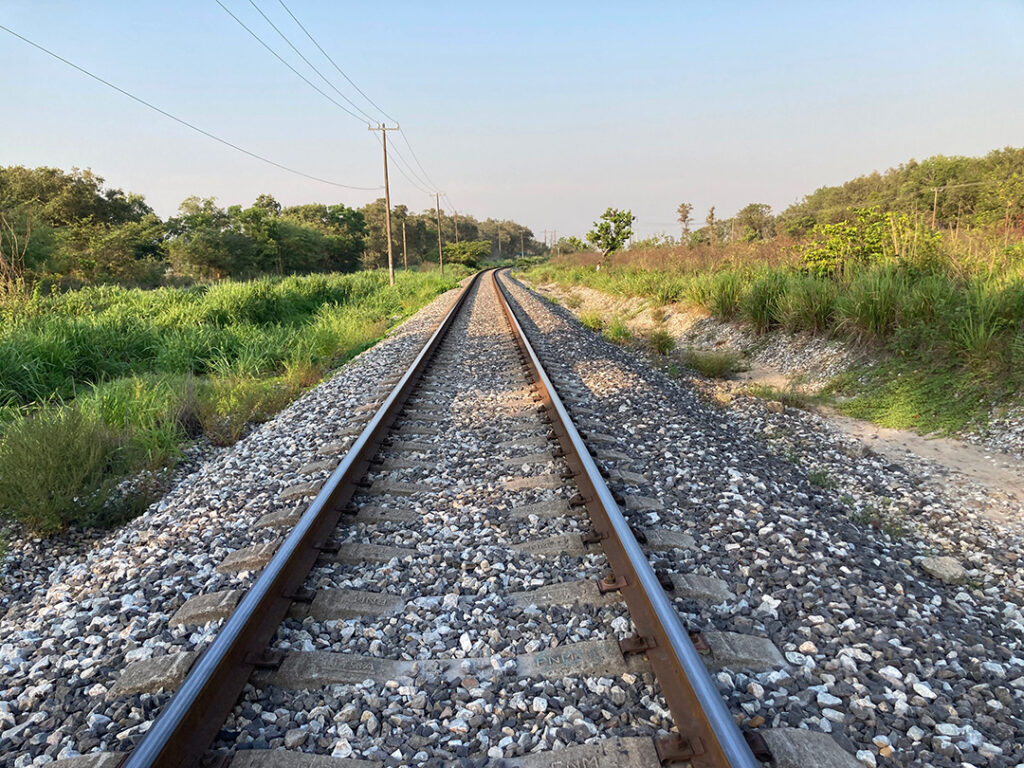
Chinameca
“A fundamental part” is the description of the National Control Center for Natural Gas (CENEGAS) about the compressor station located in Chinameca, Veracruz.
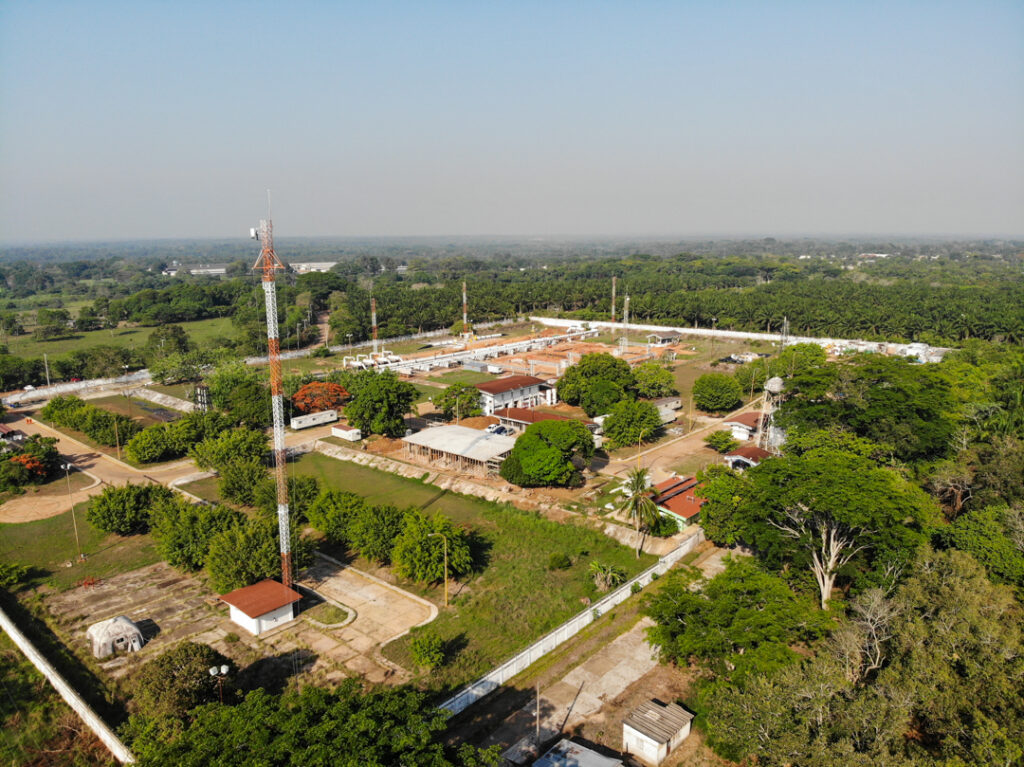
This station functions for the compression and storage of gas for its subsequent distribution and commercialization. The stations are interconnected via collection pipelines at the hydrocarbon extraction sites.
An analysis carried out by CartoCrítica highlights that the main production sites in Mexico are the Gulf of Mexico, Tabasco, Tamaulipas, Nuevo Leon, Veracruz, and Chiapas. According to CartoCrítica, in Mexico there exists a network of 1,291 projects with a length of more than 34,000 kilometers.

Furthermore, we can add the construction of the Southeast Gateway Gas Pipeline, a 715-kilometer underwater pipeline that will connect with the Jáltipan-Salina Cruz pipeline, and thus a terminal on the coast of Oaxaca. From there, gas will be exported to Europe and Asia.
The same pipeline is planned to supply gas to the Yucatan Peninsula, the Maya Train, and the PODEBI industrial parks
In June of 2023, Abraham David Alipi Mena, general director of CENEGAS, announced the rehabilitation of this station, which daily moves 300 million cubic feet of natural gas.
The general director of CENEGAS, pertaining to the Secretariat of Energy, highlighted the importance of the station for the transport of gas from the south to the north of Mexico and vice versa. They seek to increase production of up to 800 million cubic feet of natural gas daily.
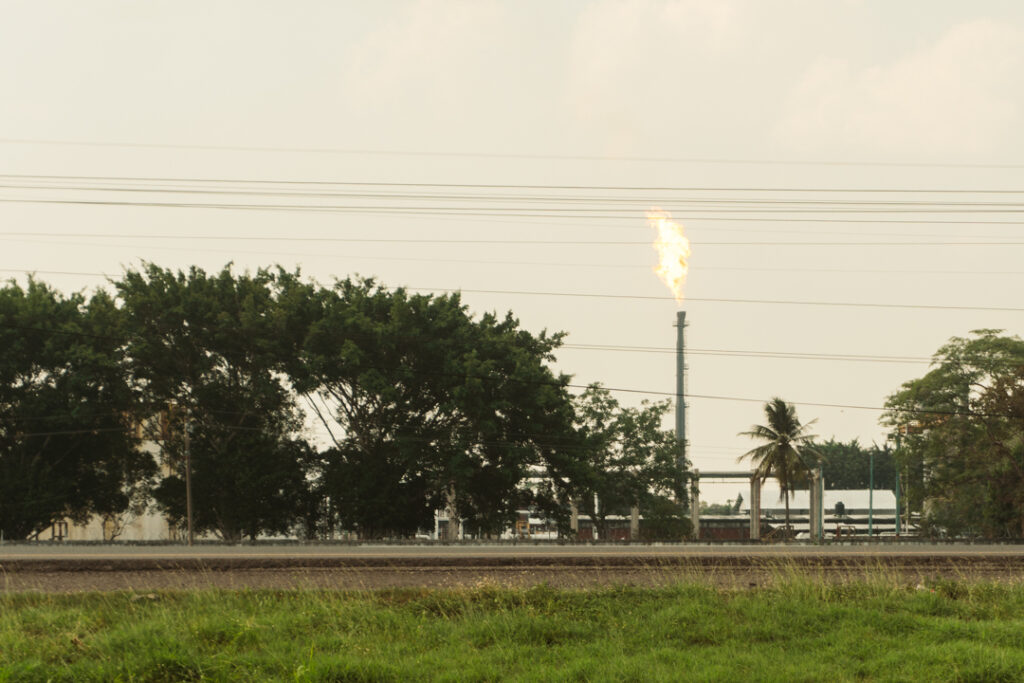
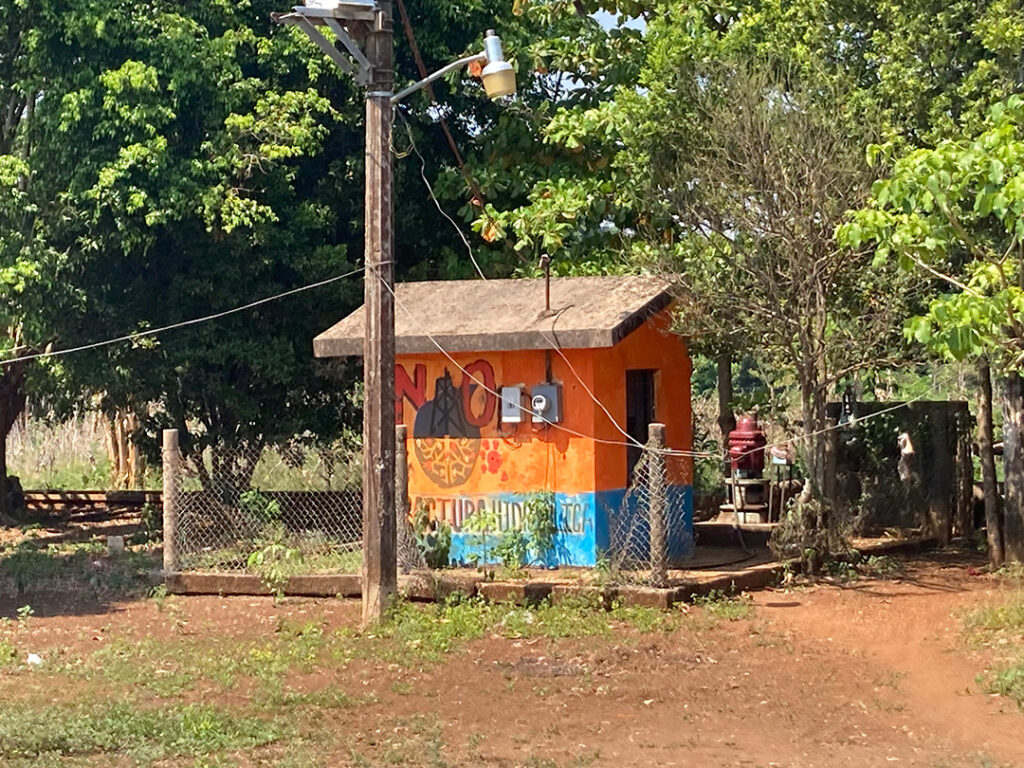
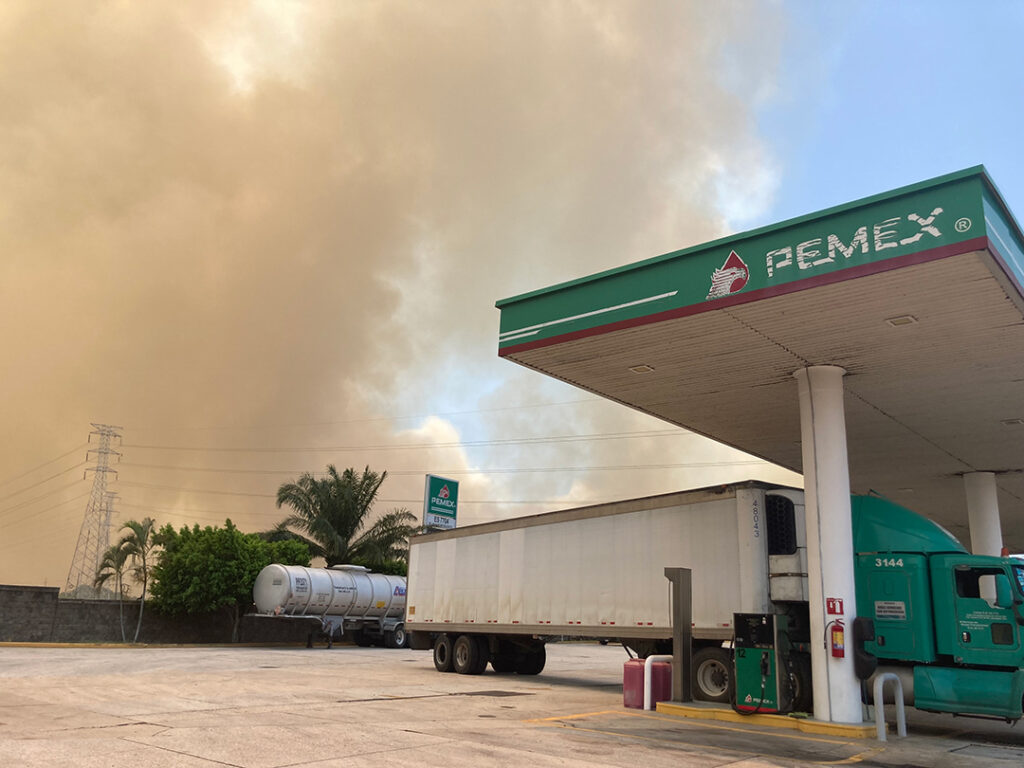
“The idea is to provide greater flexibility to the system, and with that be able to meet the existing needs, and above all the increase in the production of natural gas,” remarked the head of the agency that manages the transportation and storage of hydrocarbon.
Chinameca also houses projects of at least four of the agroindustry giants in Mexico: Bachoco, Campi, Maseca, and Oleofinos.
The latter belongs to the Oleomex group, a conglomerate of 15 companies involved in the planting, processing, and distribution of palm oil. Among their principal clients are multinational companies like Cargill, PepsiCo, and Nestle.
The processing plant, the first in the state specializing in the refining of vegetable oils and fats, was inaugurated in 2010. It was said that the plant would provide employment in the region, and it was promoted as a source for the production of biodiesel, thus boosting oil palm monoculture in the south of Veracruz.
The investment for the processing plant was part of the Programa Estratégico Trópico Húmedo to promote cocoa, rubber, and oil palm monoculture in the south-southeast of Mexico. At the same time, Oleofinos plans the installation of their infrastructure in the region to potentially export palm oil toward the southern United States, Central America, and the Caribbean.
In order to convert the palm oil from a liquid to a solid or a semisolid substance, the hydrogenation process is used with catalytic elements such as nickel and chromium, which are highly toxic residues derived from industrial activity.
According to the Registry of Emissions and the Transfer of Contaminants, elaborated by the Secretariat of Environment and Natural Resources, as of 2021, the Oleofinos processer was releasing elements like chromium, nickel, and carbon dioxide into the air, water, and soil in Chinameca.
Mecayapan
Veracruz is the fourth largest producer of palm oil in the country, behind Chiapas, Campeche, and Tabasco. According to the Mexican Federation of Palm Oil, in the south of Veracruz there are more than 9,000 hectares of the monocrop.
Between the municipalities of Acayucan and Mecayapan there is 40% (3,169.5 hectares) of palm oil plantations in the region and state. Mecayapan is the largest producer, registering in 2021 21% of Veracruz’s total production, with more than 15,000 tons of fresh fruit bunches.
Beyond private investment, the state has supported with the distribution of tons of chemical fertilizers like “Triple 17” to thousands of farmers in the south of Veracruz.
The Mexican Council for the Development of Oil Palm has localized between 2 and 4 million hectares that have high or medium potential for the production of palm oil in the states of Veracruz, Tabasco, Chiapas, and Campeche.
You might be interested in- La Encrucijada’s Dilemma: The Greenwashing of Oil Palm
“The idea is to provide greater flexibility to the system, and with that be able to meet the existing needs, and above all the increase in the production of natural gas,” remarked the head of the agency that manages the transportation and storage of hydrocarbon.
Chinameca also houses projects of at least four of the agroindustry giants in Mexico: Bachoco, Campi, Maseca, and Oleofinos.
The latter belongs to the Oleomex group, a conglomerate of 15 companies involved in the planting, processing, and distribution of palm oil. Among their principal clients are multinational companies like Cargill, PepsiCo, and Nestle.
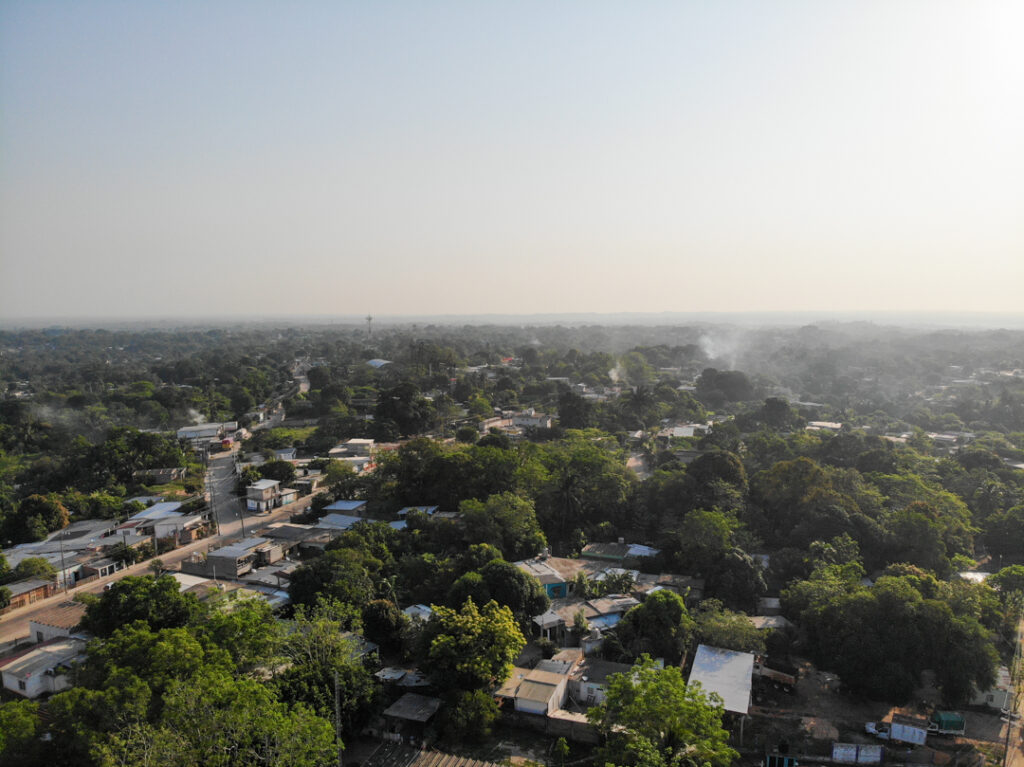

The processing plant, the first in the state specializing in the refining of vegetable oils and fats, was inaugurated in 2010. It was said that the plant would provide employment in the region, and it was promoted as a source for the production of biodiesel, thus boosting oil palm monoculture in the south of Veracruz.
The investment for the processing plant was part of the ProgramaEstratégicoTrópicoHúmedoto promote cocoa, rubber, and oil palm monoculture in the south-southeast of Mexico. At the same time, Oleofinos plans the installation of their infrastructure in the region to potentially export palm oil toward the southern United States, Central America, and the Caribbean.

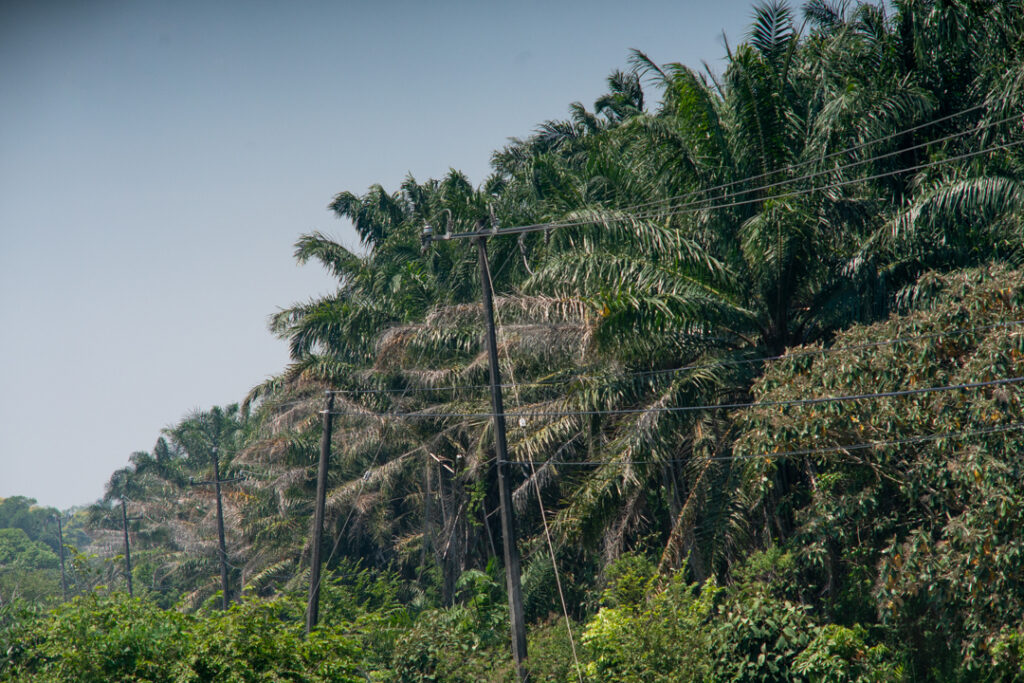
In order to convert the palm oil from a liquid to a solid or a semisolid substance, the hydrogenation process is used with catalytic elements such as nickel and chromium, which are highly toxic residues derived from industrial activity.

According to the Registry of Emissions and the Transfer of Contaminants, elaborated by the Secretariat of Environment and Natural Resources, as of 2021, the Oleofinos processer was releasing elements like chromium, nickel, and carbon dioxide into the air, water, and soil in Chinameca.
Mecayapan
Veracruz is the fourth largest producer of palm oil in the country, behind Chiapas, Campeche, and Tabasco. According to the Mexican Federation of Palm Oil, in the south of Veracruz there are more than 9,000 hectares of the monocrop.
Between the municipalities of Acayucan and Mecayapan there is 40% (3,169.5 hectares) of palm oil plantations in the region and state. Mecayapan is the largest producer, registering in 2021 21% of Veracruz’s total production, with more than 15,000 tons of fresh fruit bunches.
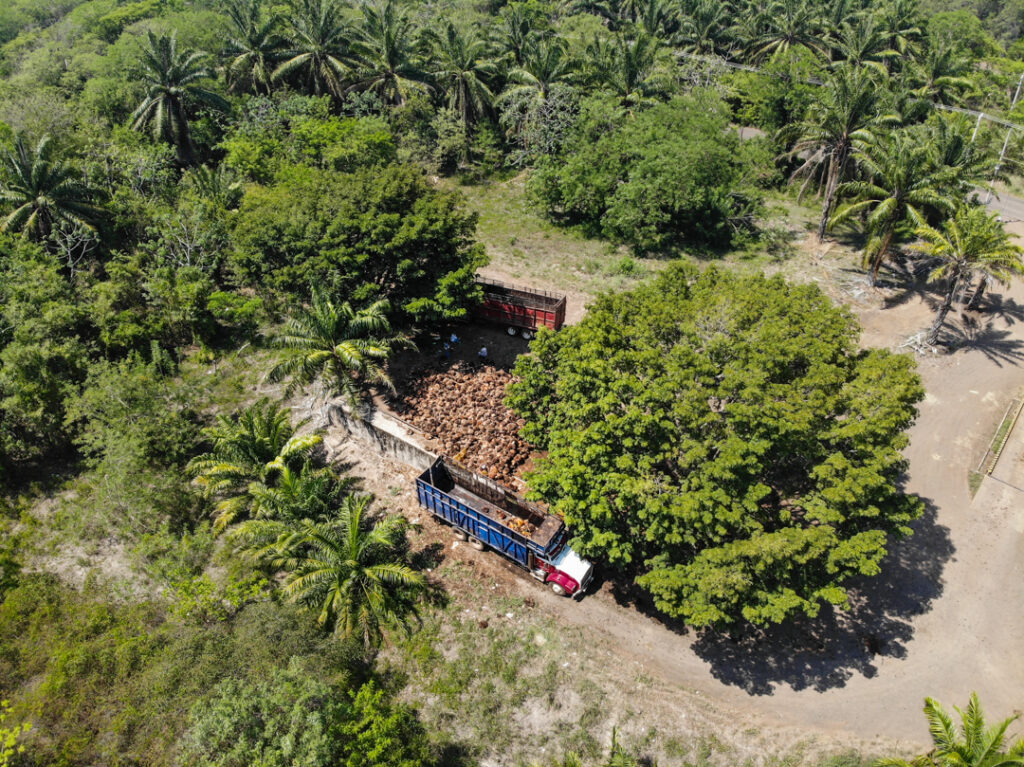
Beyond private investment, the state has supported with the distribution of tons of chemical fertilizers like “Triple 17” to thousands of farmers in the south of Veracruz.
The Mexican Council for the Development of Oil Palm has localized between 2 and 4 million hectares that have high or medium potential for the production of palm oil in the states of Veracruz, Tabasco, Chiapas, and Campeche.
You might be interested in- La Encrucijada’s Dilemma: The Greenwashing of Oil Pal
An analysis carried out by the Centro de Estudios para el Cambio en el campo Mexicano and the organization Mexico Via Berlin, highlights that the northern region of Acayucan and Mecayapan are expanding along the highways. The acceleration of expansion in the region interconnects with the Interoceanic Corridor and the Maya Train.

Jáltipan
Petroleum coke is a residue from oil refining activities, and a derivative of coal. It is used as fuel for electric generators and has a high level of sulfur causing environmental problems.
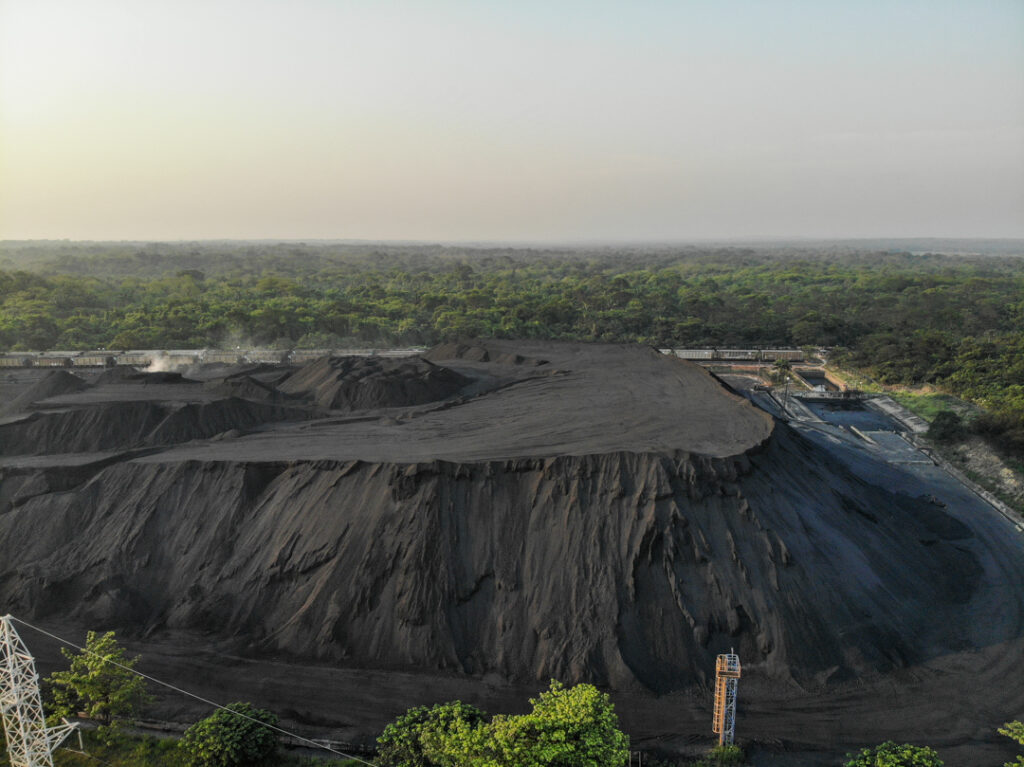
For more than ten years, in the municipality of Jáltipan, which has more than 40,000 inhabitants, a coke storage plant has been operating. Inhabitants claim that it is a source of contamination because the material is found in large quantities and in the open air.
Environmental organizations such as Chogosteros en Acción say that this contaminant causes illnesses ranging from pneumonia and pulmonary fibrosis to liver and kidney failure, deformities, miscarriages, and cancer.

The property is owned by the Spanish company ADN Energía, which since July of 2013 has commercialized more than 1 million tons of petroleum coke a year. The population of the region says that the company installed the open-air coke collection area above freshwater springs, covering a surface area of more than 25 hectares.
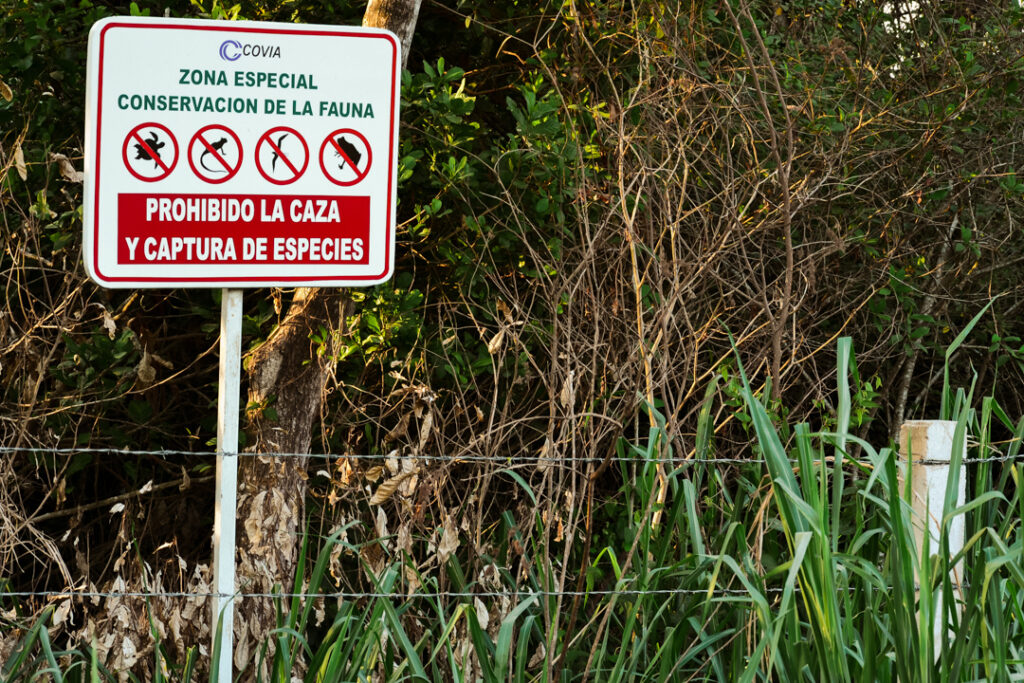

Covia is a North American company that presents itself as environmentally friendly and publicizes various “sustainable” and conservation initiatives.
It argues that its Jáltipan mining and processing plant has been recognized for “preserving and restoring the habitat near the operation.”
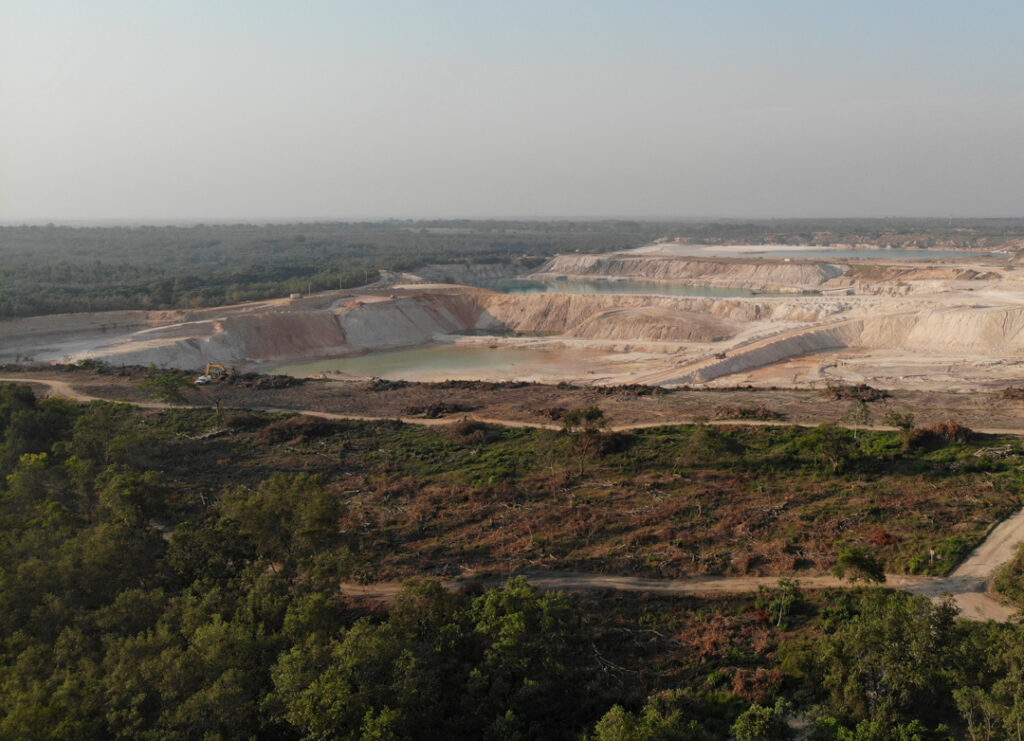
In contrast, its operations in the municipalities of Jáltipan and Chinameca, where they extract silica sand for the manufacture of glass, have been denounced as harmful to the environment. Local residents claim that the residues affect 10,000 inhabitants of the region and also contaminate the Chacalapa river.
Covia also has operations in Chihuahua, Puebla, Coahuila, and Guanajuato. The minerals that they extract are zinc, lead, silver, and iron.

